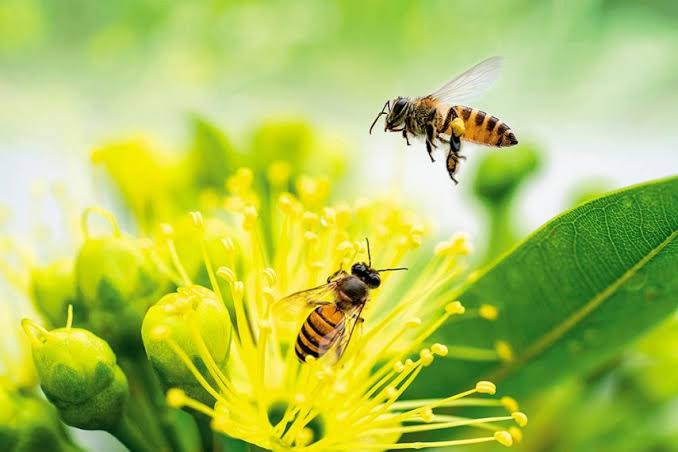Climate Friendly Agriculture: Tips for soil and water conservation
Land and water are the greatest assets and resources God gave mankind. Without land, about 80% of Ugandans, who depend on land directly, will have nowhere to grow crops for food or for cash, or where to build houses to live in and houses for shops, businesses and factories where our people get employment.
A prominent Briton, Sir Winston Churchill, then in British Colonial Office, visited Uganda in 1906. He described Uganda as the Pearl of Africa because of its fantastic climate and good soil that is capable of supporting a wide range of crops.
However, due to poor soil management and climatic changes, we are losing our land with impunity and we are unable to enjoy the fruits of the Pearl as we ought to and before long, there will be no suitable land where we can grow crops for food, for cash crops or for agro-raw materials for our industries. This will hinder our sustainable agricultural productivity and national economic development. This will result in food insecurity and poverty increase.
How we are losing the soil?
We are losing our soil through land degradation due to soil erosion, where volumes and volumes of top soil is carried away by water and/or wind, and poor soil management.
What are the causes of land degradation?
Land degradation is caused by many factors which include;
• Excessive cultivation and compaction, even on fragile lands like hills and wet-lands
• Human activities especially inappropriate ones affect the soil and conservation practices like terraces
• Land tenure systems which have inherent constraints to land planning and conservation
• High population, poverty and food insecurity force people to encroach on forests and marginal lands thus exacerbating human induced land degradation
• Scarcity of water, lack of irrigation and transhumance pastorists roam and cover-crowd their herds in a few watering places
• Dependence on wood and charcoal for fuel is putting pressure on our forests
• Sensitivity of our soils in that they have characteristics
• Lack of bye-laws to enforce proper land usage
How can we conserve our land?
There are a number of ways through which Local Governments can help to conserve our soils, and these are among them; all people must be sensitized about the dangers of soil erosion. Involve all stakeholders and the community in land husbandry improvement, at individual farm level, and at community level. Promote soil and water conservation.
Some of water conservation methods should include;
1. Planting grass bands to control the speed of the running water
2. Constructing wooden check dams, stone check dams or gabion boxes made of wire mesh and filled with stones and placed in gulleys
3. Intercropping cereals and legumes and to have proper rotation to build up soil fertility
4. Mulching to improve infiltration and soil structure
5. Ploughing along contours
6. Planting cover crops to guard the soil from being pulverised by raindrops and erosion
7. Planting strips of crops along the contours
8. Constructing contour hedgerows
9. Construction of terraces. Terraces are flat land on slopes. A bench terrace is made by digging a trench along the contour and throwing the soil up the slop-called “tupa jju”. Terraces can be flat to allow water infiltration or graded with gentle slope to allow water flow. Stone lines can be arranged along contours at different levels on the slope for making terraces. Retention ditches are made by digging a channel along the contours and throwing the soil down the slope, called “tuppa chini”. They hold and reduce water speed and allow infiltration.
10. Trash lines made by laying dry plant remains along the contours e.g maize stalks, beans or sorghum stalks. Grass strips are strips of land left unploughed between fields. They follow contours and prevent soil erosion. Minimum cultivation, when you plough only where you are going to plant. This reduces the cost and also ensures that the soil is covered.
11. Hedges are rows of bushes planted along the contours on slopes e.g sisal, to prevent gully formation.
12. Agro-forestry is the growing of woody perennial trees in association with crops or pastures in spatial arrangement, a rotation or both and in which there are ecological interactions between a tree and non-tree components of the tree. Agro-forestry increases organic matter in the soil, nutrient recycling and provides wind breaks, forage and other services. It is important to plant multipurpose trees.
13. Planting windbreakers
14. Practicing integrated agricultural production-plan
15. Integrated soil fertility management. We should apply all components necessary to promote healthy and sustainable crop growth. These encompass the use of organic and inorganic fertilizers, manure, tillage operations, water management, and even control of pests and diseases.
16. Road constructors should fill up the ditches after removing soil for construction.
17. Conserving water for agricultural production and for human use. This can be through construction of dams, harvesting rains from roofs or excess run off after heavy rains.
By Wandera Alexander
National Environmental Students Organization
Fika Afrika Advocacy Foundation
African Food Security and Climate Army
alexanderwander14@gmail.com
swtxander.blogspot.com
Iam a student for Nature




Comments
Post a Comment